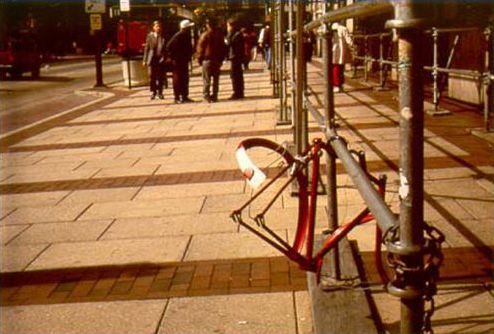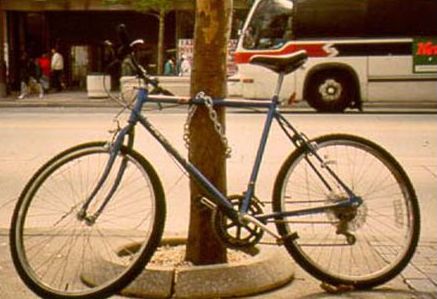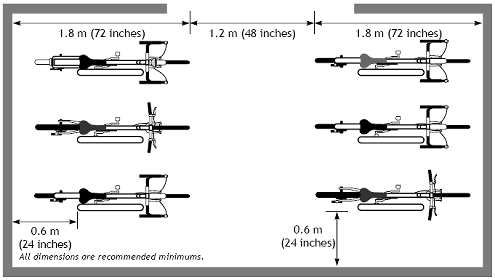Lesson 17: Bicycle Parking and Storage

Lesson Outline
- Bicycle parking objectives.
- Types of bicycle parking.
- Identifying priority locations.
- Rack area and rack designs.
- Bicycle parking ordinances.
Bicycle Parking Objectives
- Provide well-located, secure bicycle parking at popular bicycling destinations.
- Require new commercial, public, and high-density residential developments to include bicycle parking.
Types of Bicycle Parking
Implementation Strategy
- Install parking on public property.
- Encourage businesses to provide parking.
- Change zoning regulations to ensure that parking is provided in new developments.
Implementation Elements
- Identify key implementers.
- Structure the program.
- Identify priority locations.
- Choose appropriate parking devices.
- Implement.
- Evaluate.
Identify Priority Locations
- Visual observation.
- User input.
- Land-use criteria.
- Visibility.
- Security.
- Lighting.
- Ease of access and avoiding conflict.
|

|
Rack Area Design

| Source: APBP Bicycle Parking Guidelines, Spring 2002 |
Recommended Rack Designs
| Source: APBP Bicycle Parking Guidelines, Spring 2002 |
Designs NOT Recommended
| Source: APBP Bicycle Parking Guidelines, Spring 2002 |
Parking Ordinances
- Number of spaces required.
- Types of permitted rack designs.
- Location of bicycle parking/racks.
- Other elements:
| – |
Lighting. |
| – |
Signing. |
| – |
Weather protection. |
Lesson Summary
- Bicycle parking is an important supporting element.
- Bicycle parking should not just happen—it should be part of a larger implementation strategy.
FHWA-HRT-05-118
|
